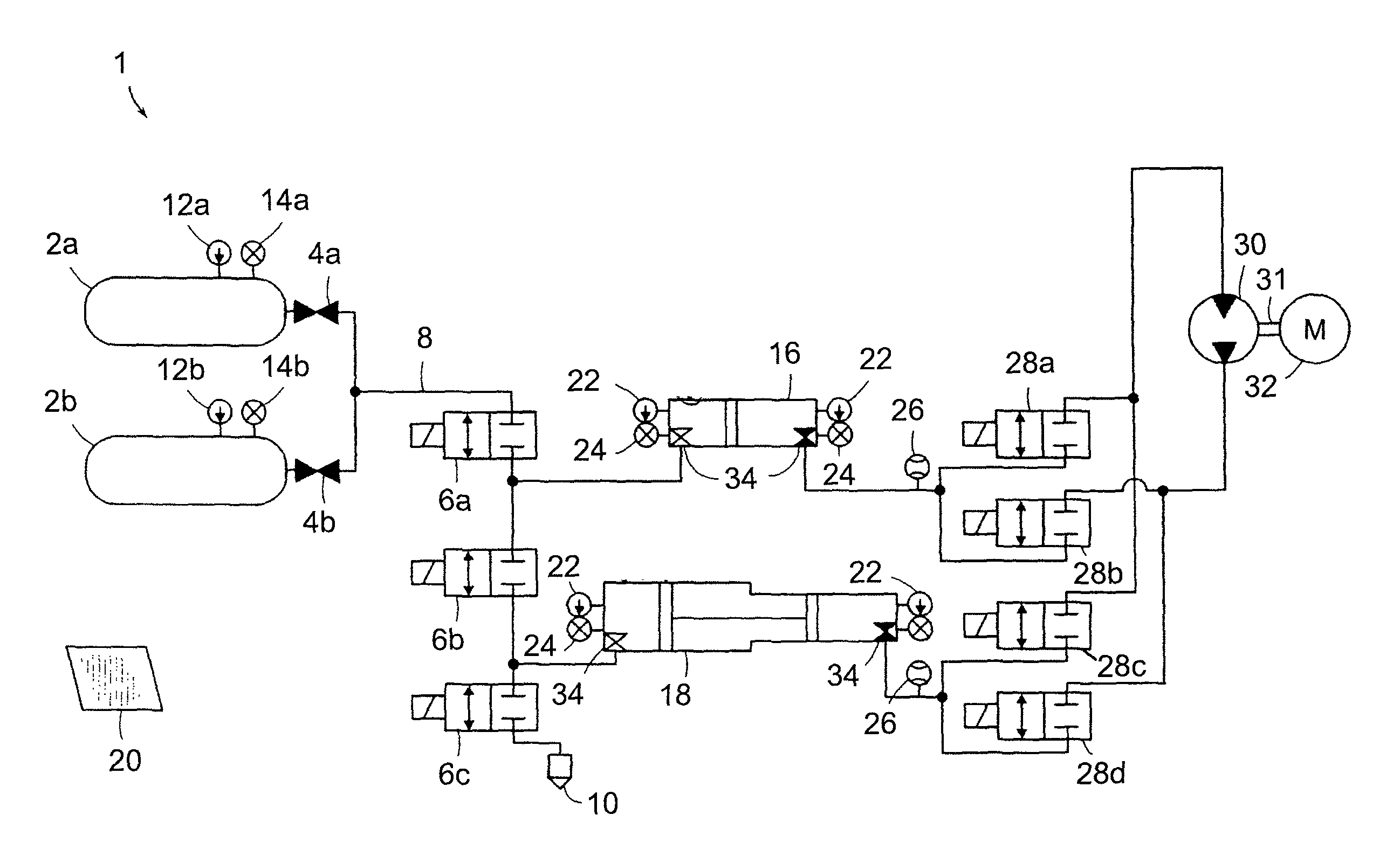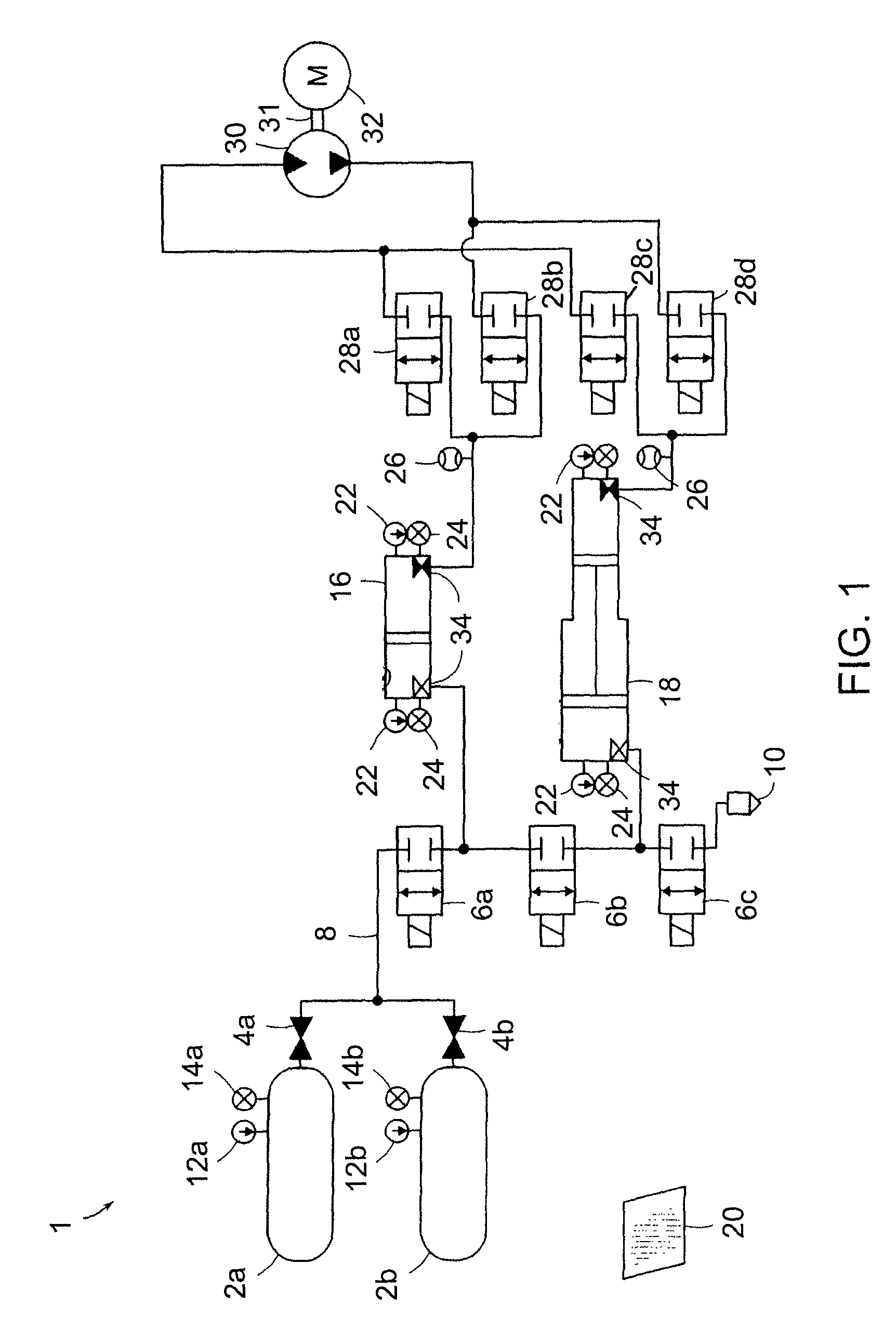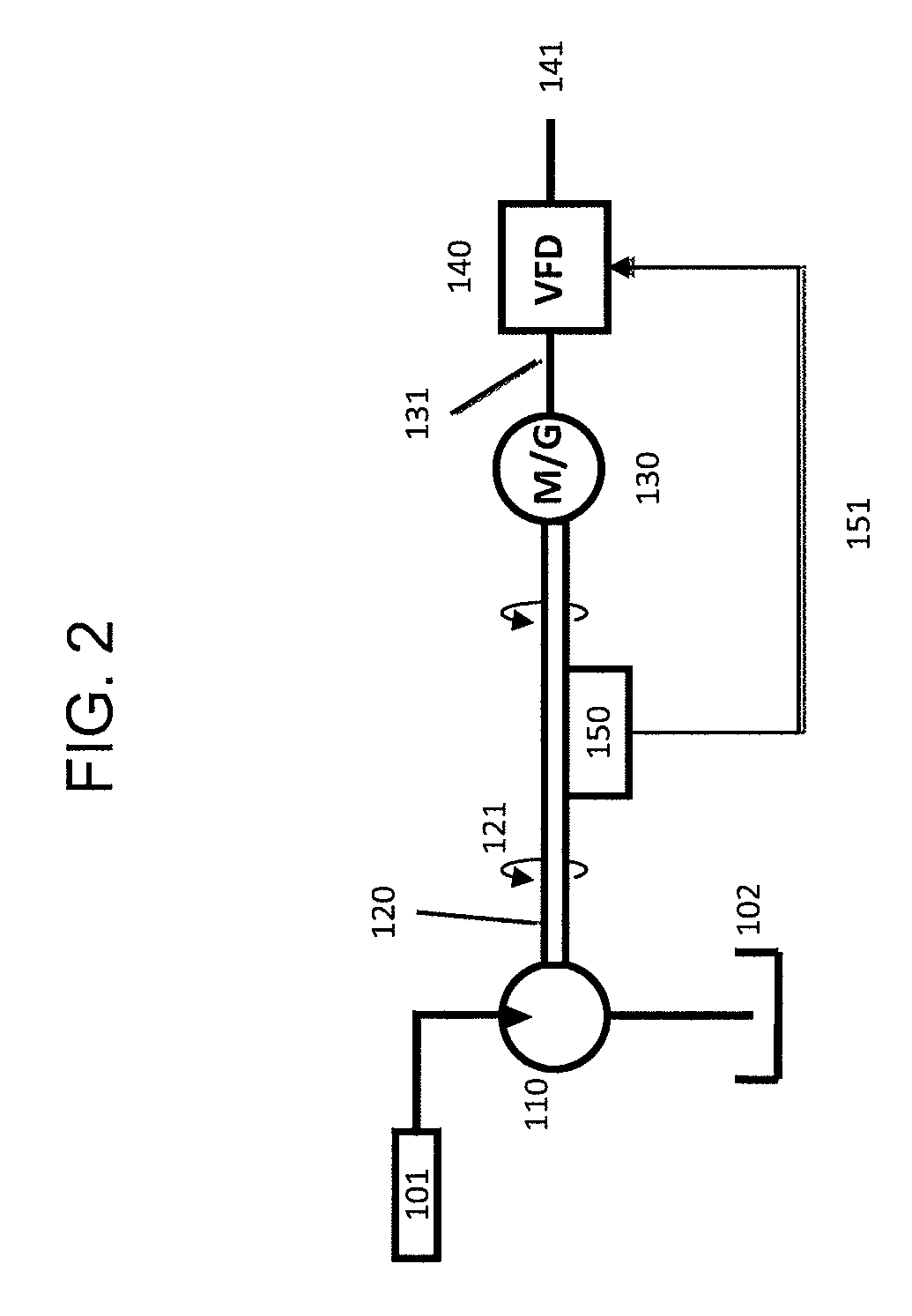[0016]Additionally, the control system can be used to vary electrical load on the generator. That is, the control system may be configured to increase the RPM of an electric generator by controlling a VFD in such a way as to modify the generator's load in response to decreasing torque on its shaft. Constant power output from the electric generator is thereby maintained and the output voltage of the electric generator can be synchronized to a power grid. Additionally, or alternatively, the control system can be used to vary the mechanical load on the hydraulic motor. The control system may be configured to increase the RPM of the hydraulic motor by adjusting the CVT in such a way as to decrease the hydraulic motor's load in response to decreasing torque on its shaft. Motor RPM consequently increases, constant power output from the electric generator is maintained, and the output voltage of the electric generator can be synchronized to a power grid.
[0017]Other systems and methods for providing constant power, improving efficiency, and overcoming the limitations of fixed displacement motors when operating over a wide pressure range include using active control with a VD hydraulic motor. For example, efficiency for an electric motor-generator can vary substantially based on torque and RPM; when the hydraulic motor-pump in the staged hydraulic conversion system is attached to an electric motor-generator, it would be advantageous to operate at a narrow range or fixed value for RPM (e.g. 1800 RPM) and torque to operate at peak efficiency, increasing electric motor, and thus system, efficiency. Likewise, operating at a fixed RPM and power (and thus constant voltage, frequency, and current for an electric generator) during system discharge would allow an electric generator to be synchronized with the grid and potentially eliminate additional power conditioning equipment that would be required for a variable frequency, variable voltage, and / or variable power output. By using the VD hydraulic motor-pump in lieu of the FD hydraulic motor, the displacement per revolution can be controlled in such a way as to maintain a nearly constant torque and proportionally increasing flow rate such that the RPM and power output are kept nearly constant. For the novel compressed air energy storage and recovery system using staged hydraulic conversion described in the above-referenced applications, this constant RPM and power allows for a reduction in electric system costs by potentially eliminating power conditioning equipment necessary for a variable frequency, voltage, or power output, while at the same time improving overall system efficiency by operating at the peak efficiency region of the electric generator; likewise, the increasing flow rate maintains a nearly constant power throughout a decreasing pressure range, also adding value to the energy storage and recovery system.
[0018]Furthermore, high efficiency standard commercial variable displacement motor-pump designs include radial piston style (external cam), which are used primarily at low speeds, and axial piston styles (swash-plate, bent-axis). For axial piston motors, the piston assembly typically rotates in an oil bath; for large displacement axial piston motors, viscous drag (which is proportional to speed squared) limits efficiency at high rotational speeds. Additionally, for the radial and axial piston styles displacement is reduced by reducing piston stroke; as piston stroke drops below half the total possible stroke, efficiency typically drops substantially. As described herein, newly developed VD hydraulic motor-pumps which use digital control to open and close valves to control displacement are able to achieve substantially higher efficiencies at large displacement sizes (no longer rotating the entire piston assembly in an oil bath) and maintain high efficiency at low relative displacements (by not changing piston stroke length). In these digitally controlled pumps / motors, relative displacement is controlled by actively opening and closing valves to each piston, such that each piston may or may not be exposed to high pressure each time the rotating cam completes a revolution. Unlike the standard commercial VD motor-pumps, the piston always completes a full stroke, maintaining high motor-pump efficiency even at low relative displacements.
[0019]In one aspect, the invention relates to a system for providing a constant electrical output from a compressed gas energy storage and recovery system. The system includes a hydraulic-pneumatic energy storage and recovery system configured to provide a varying pressure profile at, at least one outlet, a variable displacement hydraulic motor-pump in fluid communication with the at least one outlet, and a control system in communication with the variable displacement hydraulic motor-pump. The control system controls at least one variable, such as pressure, piston position, power, flow rate, torque, RPM, current, voltage, frequency, and displacement per revolution. The use of the variable displacement hydraulic motor and associated control system allow a user to achieve near constant expansion and compression power in the hydraulic-pneumatic energy storage and recovery system, while maintaining near constant RPM or torque at the shaft of an electric motor-generator.
 Login to View More
Login to View More  Login to View More
Login to View More 


